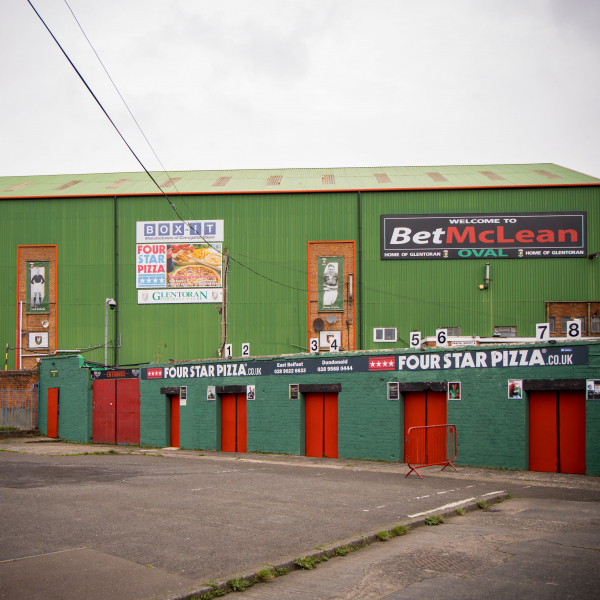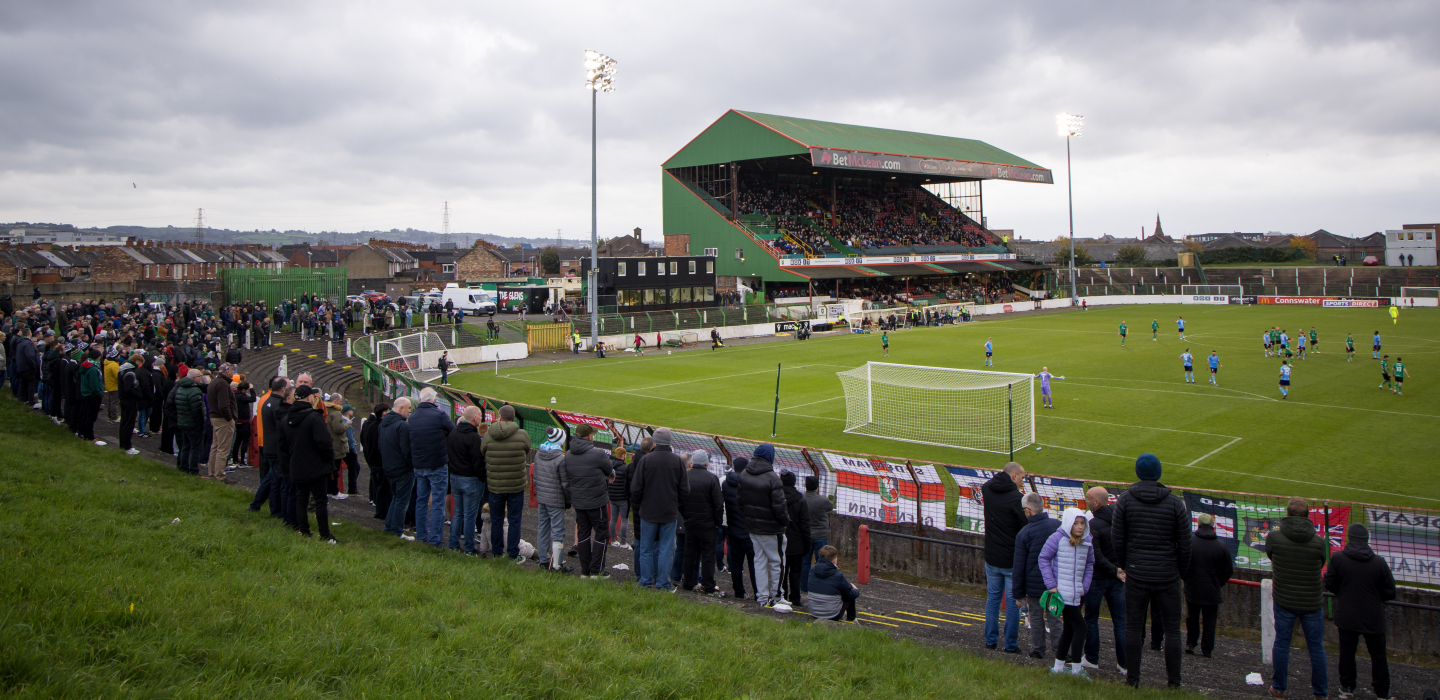Glentoran FC – The Oval, the stadium that kept breathing

The façade is green and red, flanked by pizza ads and bookmakers. But behind it lives a soul you won’t find anywhere else. We walk through the gates, past weathered walls and seats that carry more scars than paint. Some are black and wooden, others red and plastic. It’s not pretty, but it’s honest. The stadium doesn’t pretend — it simply shows its age. And though a rebuild is planned for 2026, today it still breathes the old way: raw and real.
The fans stand where Glentoran must score. No choreography, no drums, no megaphones. Just eyes following the ball, bodies shifting with the rhythm of the game. For one half, they even stand beside the away end, separated only by a gate that stays open. No hostility, no theatre. Just football. It’s quiet, but the silence is charged — as if the terrace itself decides when to cheer.

The Oval is a witness. To generations, to rituals, to a city divided and stitched together by football. And as I stand there, I know: this isn’t a stadium you visit. It’s a stadium you encounter. A place that stays with you, because it reminds you that football isn’t built from steel or seats — it’s built from people and memory.
And somewhere across the city stands Windsor Park. Polished, modern, national.
One stadium points to the other, and so the circle turns.

